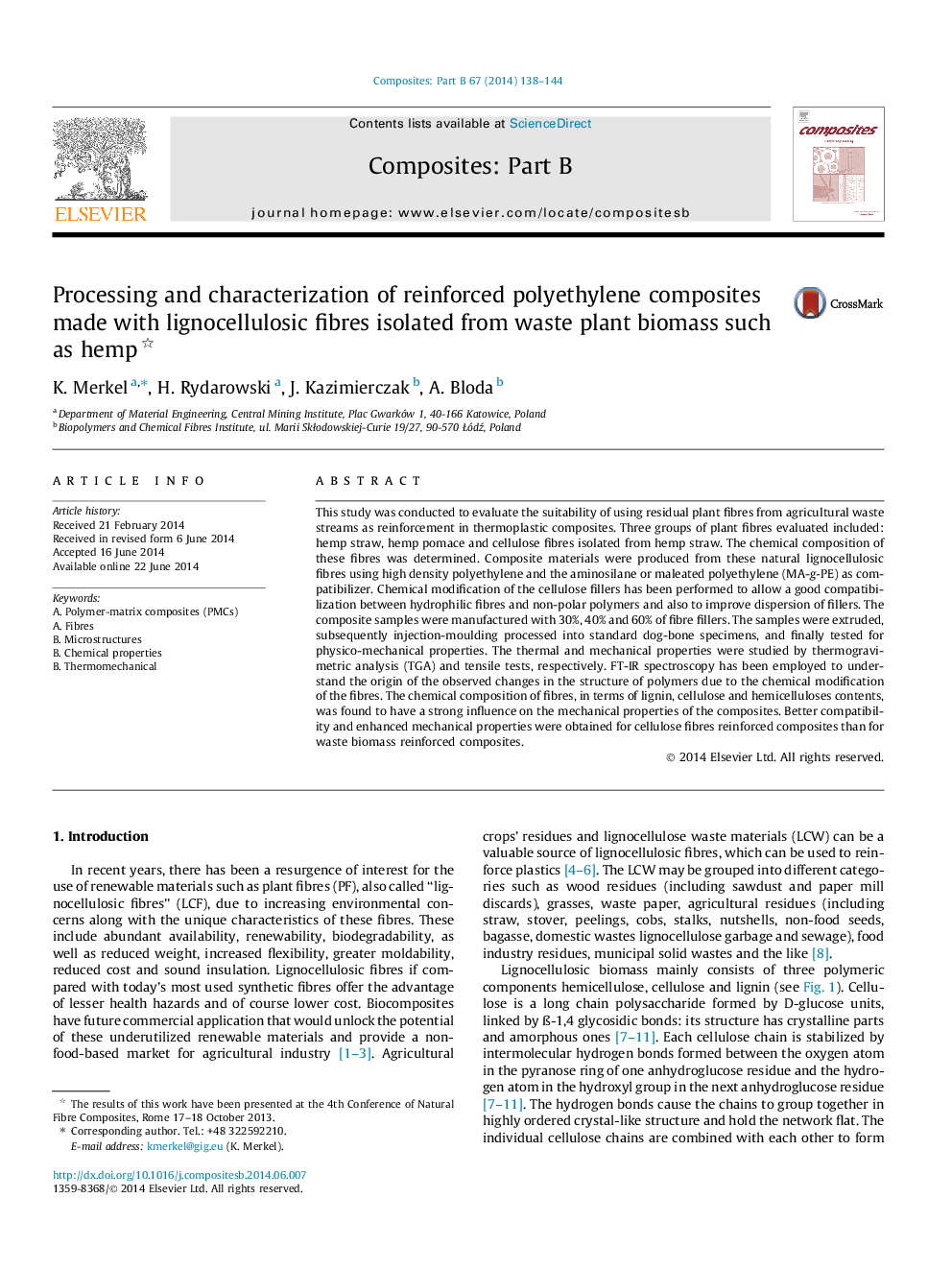| Article ID | Journal | Published Year | Pages | File Type |
|---|---|---|---|---|
| 7213368 | Composites Part B: Engineering | 2014 | 7 Pages |
Abstract
This study was conducted to evaluate the suitability of using residual plant fibres from agricultural waste streams as reinforcement in thermoplastic composites. Three groups of plant fibres evaluated included: hemp straw, hemp pomace and cellulose fibres isolated from hemp straw. The chemical composition of these fibres was determined. Composite materials were produced from these natural lignocellulosic fibres using high density polyethylene and the aminosilane or maleated polyethylene (MA-g-PE) as compatibilizer. Chemical modification of the cellulose fillers has been performed to allow a good compatibilization between hydrophilic fibres and non-polar polymers and also to improve dispersion of fillers. The composite samples were manufactured with 30%, 40% and 60% of fibre fillers. The samples were extruded, subsequently injection-moulding processed into standard dog-bone specimens, and finally tested for physico-mechanical properties. The thermal and mechanical properties were studied by thermogravimetric analysis (TGA) and tensile tests, respectively. FT-IR spectroscopy has been employed to understand the origin of the observed changes in the structure of polymers due to the chemical modification of the fibres. The chemical composition of fibres, in terms of lignin, cellulose and hemicelluloses contents, was found to have a strong influence on the mechanical properties of the composites. Better compatibility and enhanced mechanical properties were obtained for cellulose fibres reinforced composites than for waste biomass reinforced composites.
Keywords
Related Topics
Physical Sciences and Engineering
Engineering
Engineering (General)
Authors
K. Merkel, H. Rydarowski, J. Kazimierczak, A. Bloda,
